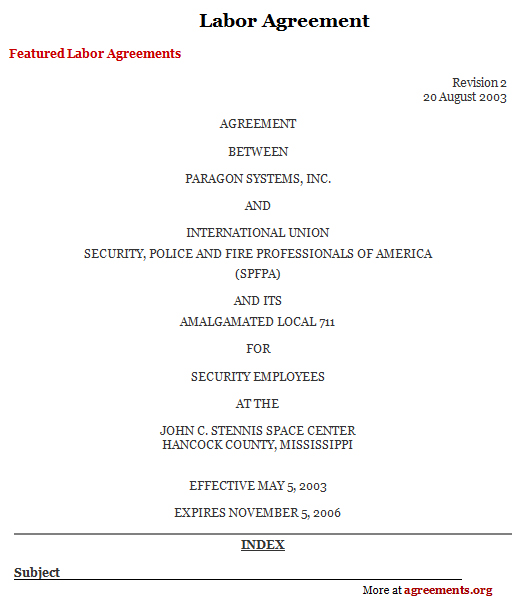A Labor Agreement is drafted between a company or employer and a contractor or workers to lay down the terms and conditions related to the services that will be rendered, the details of the project, and payment. In case the contract is drafted between the employer and a labor union, it is called a collective agreement, collective labor agreement, or collective bargaining agreement.
When Do You Need Labor Agreement?
A labor agreement is used when a company is hiring workers on a contractual basis for any project.
The purpose of a labor agreement is to ensure that both parties perform their respective obligations to each other as agreed. If either party fails to perform their obligations as under this agreement, they can be pursued under the provisions of the governing law or as mutually agreed upon. Additionally, physical documents that expressly state the terms mutually agreed upon by both parties avoid the risk of miscommunication which can lead to disputes.
You will need a labor agreement if:
- You’re a company or an employer hiring workers through a contractor or otherwise.
- You’re a labor union representing a group of workers looking to contract with an employer for a project through a collective labor agreement.
- You’re a contractor or a worker being hired for a project by a company.
Inclusions in Labor Agreement
An effective agreement will include the date on which the agreement comes into force, the names of the contracting parties and a clause recognizing any union that might be a party to or a representative of one or more workers who are party to the contract, the nature and scope of the services that are to be rendered to the company hiring the workers, the consideration for the services rendered, timings of shifts and the number of workers that will work in each shift, and other clauses such as provisions for insurance that might be required by state or federal law.
Standard clauses such as those that provide for waiver, warranty, dispute resolution, and default must also be included. The contract must be framed as explicitly and expressly as possible in order to avoid miscommunication.
How to Draft Labor Agreement
Procedure to follow when drafting the agreement:
- Mention the effective date of the agreement.
- Identify the parties to the contract and their representatives.
- In the case of a collective bargaining agreement, acknowledge the workers’ union representing the workers.
- Include an equal opportunity clause, if applicable.
- Include a clause that recognizes seniority of workers.
- Include a clause to prevent strikes.
- Mention the details of the project.
- Establish the scope of services.
- Include the terms of payment that will discuss the payment of wages and any other benefits as consideration
- Discuss terms of holidays, sick leave, other leaves, vacations, layoffs, and recalls.
- Mention procedure of grievance redressal and dispute resolution.
- Define terms of default detailing what would constitute an event of default or non-performance and its consequences.
- Include standard terms that provide for the limitation of liability, governing jurisdiction and any other terms that may federal or state law may require.
Benefits of Labor Agreement
The advantages of using the agreement include:
- It ensures that both parties perform their respective obligations to each other as was agreed upon in the agreement.
- It lays down all the terms and conditions involved in a single document that is accessible to both parties. This prevents miscommunication which can lead to disputes.
- In the event of a dispute between the parties involved, it is easier to prove the existence of a physical agreement than that of a verbal agreement. This streamlines the dispute resolution process by a great deal.
Key Terms/Clauses in Labor Agreement
The following key terms must be included when drafting a labor agreement:
- Scope of services: This clause discusses the exact scope of services that are to be rendered to the employee as part of the contract. Quality issues can be disputed as non-performance of the contract if provisions for the same are made. This clause protects the interests of the workers by preventing exploitation by the employer. It also protects the interests of the employer as it ensures the quality of the services is as expected.
- Payment: This clause details the consideration being exchanged for the services rendered to the employer. This is essential as the contract would be void without consideration. It must detail wages and the mode of their payment, among other relevant terms and conditions.
- Prevention of strikes: This clause prevents the union from authorizing any strikes or slowdowns that could affect the project.
- Limitation of Liability: This clause limits the liability of both parties to the extent mutually agreed upon.
Sample Labor Agreement
A sample of the agreement can be downloaded from below.

Download this USA Attorney made Original Agreement for only $9.99
By clicking the button below, I agree with the Terms & Conditions.—————-